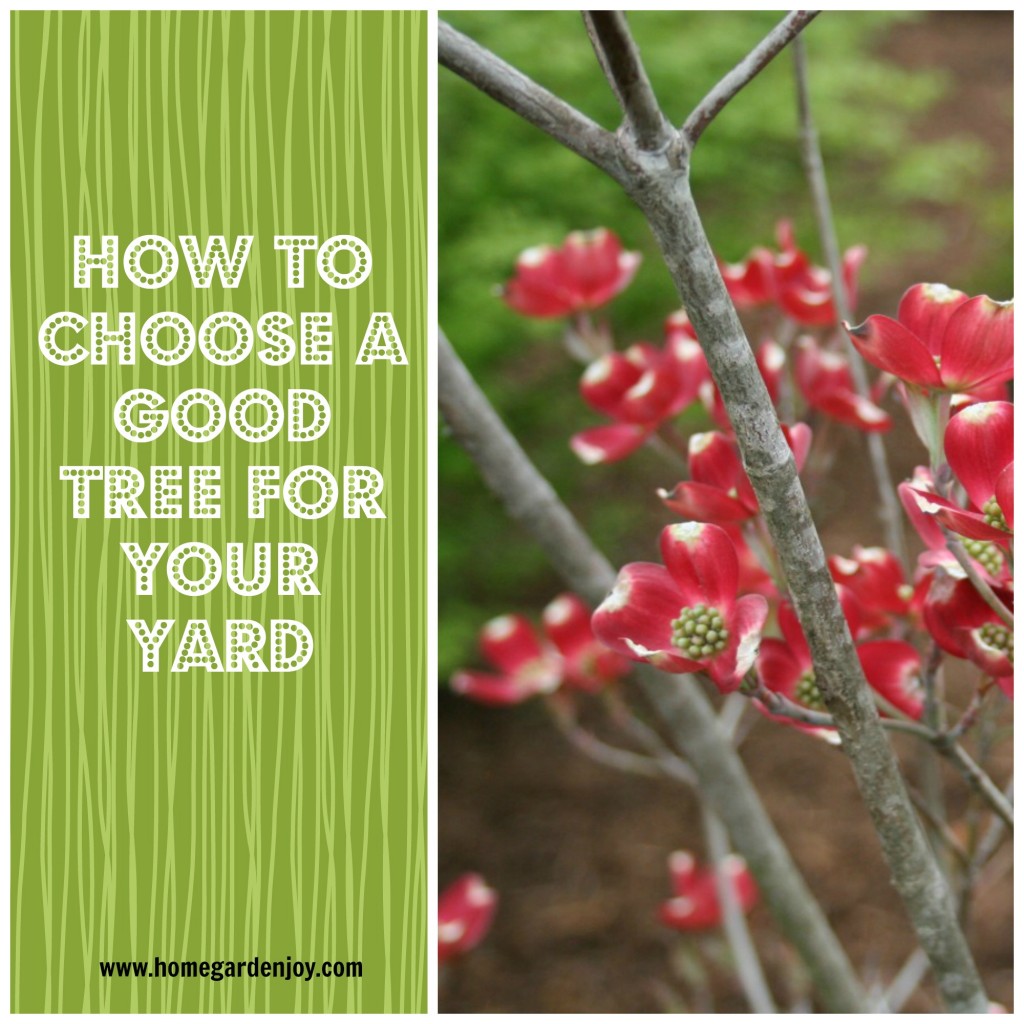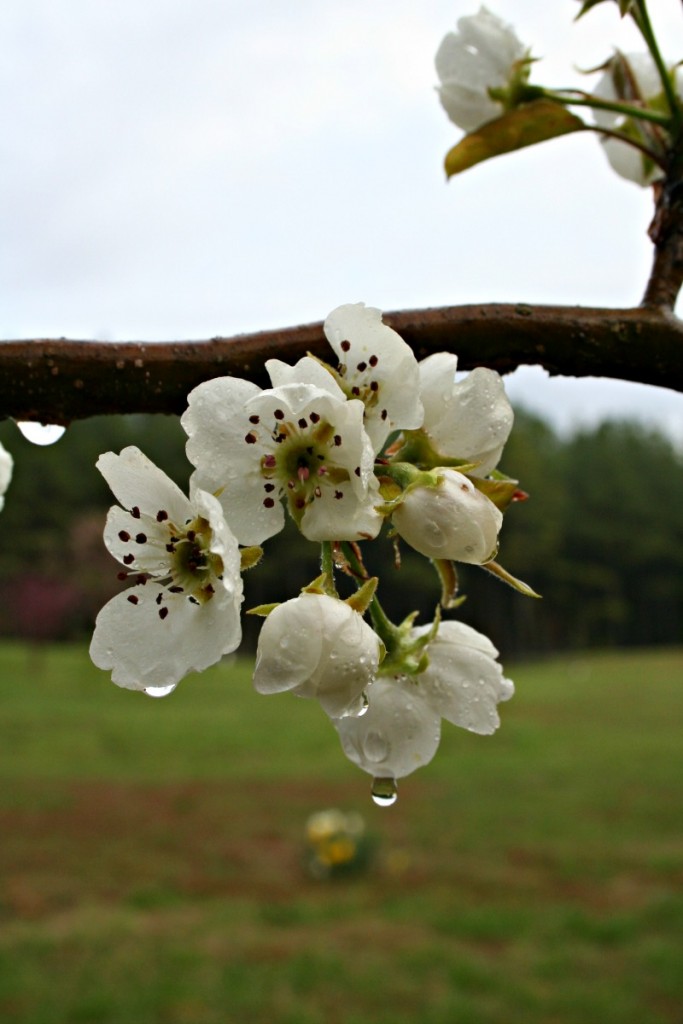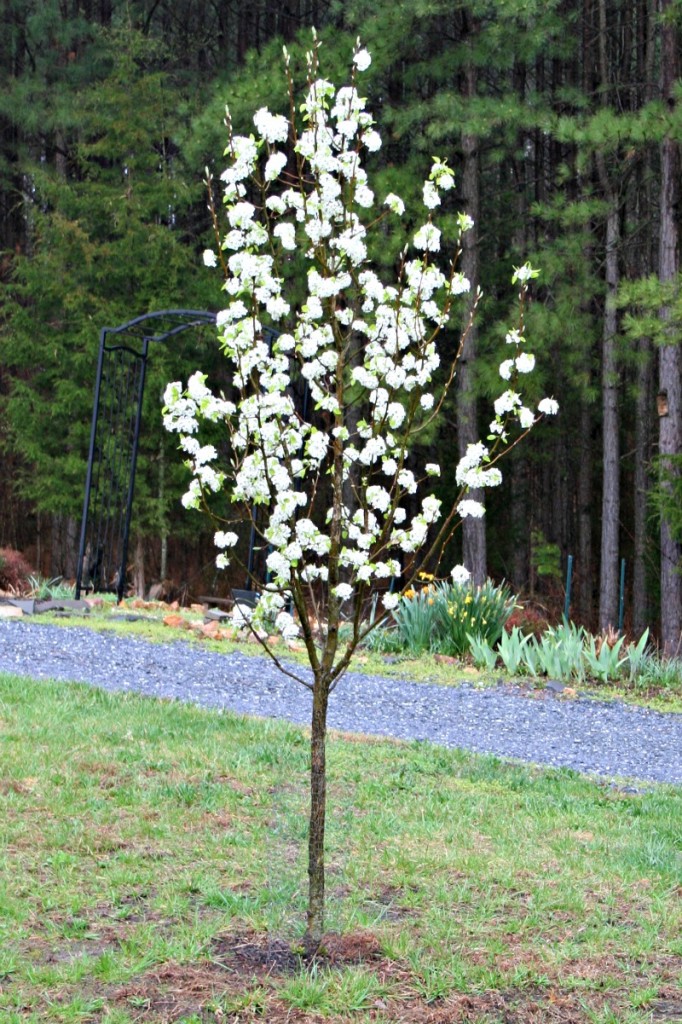To celebrate National Arbor Day, I thought I’d talk to you a little today about choosing a great tree for your yard.
Trees may be something that you take for granted. If you live in a city or suburban area, for example, your local town may actually decide what to plant along the street and even on your front lawn. That’s the way it was where I lived on Long Island, New York. The original plantings of sycamores and maples that graced many of the town’s streets where I grew up were rapidly replaced first with majestic white oaks in the 1970s and then with other street trees such as ornamental pears in the 1980s and 1990s. And while both oaks and ornamental pears are lovely, nothing can replace the streets of my youth where the mature sycamores made a cool, arching tunnel of green over the hot asphalt on a summer’s day.
Why did the town move from planting maple trees to oaks? Maple trees extend their roots close to the soil surface and unintentionally lift up sidewalks, causing expensive damage. I can remember many sidewalks with big slabs of concrete heaved up by maple tree roots; they made great ramps for my bicycle, sending me air born more times than I can count! But yes, they did pose a hazard to pedestrians who were at risk of tripping over the lifted concrete. Oak trees, on the other hand, send a large tap root straight down, and do not lift up the sidewalks.
But oaks have their own issues. Just before I sold my parents home on Long Island, the sewer line backed up, sending foul sewage spewing into the basement. I called a sewer company, who discovered that the beautiful white oak tree planted on our front lawn had tapped a nice, rich source of water and fertilizer – our sewer line. The roots had not only cracked the rusty 60 year old pipe, but the tree had grown a nice thick root directly into the pipe. I mean, can you blame the tree? It probably thought it had found heaven. Unfortunately for the tree, the sewer repairman had to use an auger to bore out the root. I was astonished at the size and thickness of the root.
Common Problems When Selecting Trees
Given these stories, you can already see that choosing the right tree depends on multiple circumstances. An oak on my tiny suburban front lawn caused problems with the sewer lines, but a majestic oak gracing my front lawn now would cause no such problems; the septic lines are at the back of the house. We planted a maple here on our farm near the shed. The surface roots pose no hazard to the sidewalk, which is well away from the tree.
Common problems homeowners encounter when they choose a tree include:
- Picking a tree that’s too big for the available space: Trees are described by several variables, including the root structure, the height of the mature tree, and the branching habit. You need to know all three before choosing the right tree for your yard. Depending on where you intend to plant your tree, you may need to choose a different variety if the branching structure will eventually extend branches into your front windows or too close to your home.
- Choosing a tree that makes a mess: Remember those sycamores I described a little while back in this article? I love sycamores, but homeowners hate them. Every August, they shed their bark. I loved crunching on the thick slabs of bark, but homeowners on the street grumbled about having to sweep it from the sidewalks. Sycamores also drop seed pods shaped like spiky ping pong balls. Again, as a kid I loved stomping on them, and nothing beats a good itchy ball war. We called them itchy balls, because supposedly the seed balls made you ‘itch’ if stuffed down the back of another kid’s shirt. They didn’t make you itch, but they did cause quite a lot of mess when chucked at other kids at the bus stop, or stomped underfoot. The bottom line is that some trees are messy. Mulberry trees are another tree I loved, but the purple fruits not only make an ugly mess on the sidewalk, they attract a lot of birds, which is fine here in the country but in the city where people park their cars? You may as well hand out free car wash passes to all who park under them because the birds will “decorate” the cars with purple stained droppings. It’s a mess! Plant that same tree in a big field and it’s fine. Know your tree, and know what it drops (seeds, fruits, leaves, bark) and how you will clean it up if you don’t want the mess.
- Choosing the wrong tree for your climate: If you buy your trees at a local nursery, you should avoid this problem easily. Most nursery and garden centers offer at least a 1-year guarantee on trees and shrubs, and they don’t want to take returns, so they tend to stock what will thrive in your immediate area. It’s when excited homeowners see a tree in a garden catalog or online and buy it sight unseen that problems happen. Make sure you understand whether or not that beautiful tree will thrive in your climate. If you’re not sure, check with your local Cooperative Extension Office or the Arbor Day Society website.
Finding a Great Tree: Three Considerations
To find a great tree for your yard, use these three guidelines:
- How much space do I have? Make sure that the site selected for your tree is far enough away from the home so that the tree won’t block your view or be a danger to your home from falling branches. Also, watch out for overhead lines. You can plant trees under power and phone lines, but you’ll need to opt for low-growing trees whose branches won’t threaten the lines. Know your space and look up trees you are interested in to match the tree to the space.
- Do I want flowers? Pretty fall foliage? Or year long color? There’s a tree for each of these desires, but not for all three. Beautiful spring, summer or fall flowering trees exist. So too do trees with lovely colorful fall foliage or even evergreen color. Decide ahead of time what is most important to you and narrow down your tree choices before heading out to shop for your tree.
- What is the tree’s growth habit? I mentioned before the story of the oak tree that tapped into the sewer line at my old home. Willows are famous for their ability to seek water sources. Oaks tend to put down deep roots, while other trees are shallow rooted. Match the trees on your shopping list to the potential locations available in your yard. Consider both what grows UP and what grows DOWN; what grows OUT (branches) are also important.
Flowering Trees for Your Front Yard
Three of my favorite blooming ornamental trees for the average urban or suburban yard include:
- Dogwood (pictured at the top of this page): Dogwoods are native to the United States, Europe and Asia. They’re also the state tree of my home state, Virginia. Ranging in color from white to pink and red, dogwoods offer lovely flowering trees for partial shade. Depending on the variety you choose, they don’t get too tall, and they can grow in a wide range of soils.
- Ornamental pears: Ornamental pear trees offer lovely flowers in the spring without the messy fruit. Although Bradford pears were all the rage in the 80s, we learned the hard way that the trunk and branch structure splits over time on these trees. Newer cultivars offer the same beautiful spring flowers and gorgeous fall foliage without the trunks splitting.
- Weeping cherry trees: Like ornamental pears, weeping cherries lack edible fruit but still produce the sweeping sprays of pink blossoms that make them so attractive. The weeping or flowing habit of the branches keeps them from growing too tall, and they can be an attractive focal point in the yard or garden.
- Crabapple trees: Some people dislike the small crabapples and the tree’s habit of spreading, but crabapple “Prairie Fire” remains my all time favorite tree.
Other gardening zones and climates may call for different trees. If you live in the southwest or the Rockies, you may need to find a lovely spruce, juniper or other native tree for your region that offers color and texture.
Trees are an investment in the future. A healthy tree can live for decades, even centuries. On the property adjacent to my own is an oak tree that the local forestry service estimates may be as old as 400 or 500 years old, based on the trunk diameter. “Grandfather Oak” as we dubbed him towers over the local pines. What stories he could tell if he could speak! He was here when the Indians camped in these valleys and when the first Colonial settlers arrived. A tree is indeed an investment in the future, for that tree you plant today is likely to outlive you. So choose wisely, and choose well, and plan for the next generation to come.
Happy gardening!
For more tree resources, please see:
- How to Choose a Tree for Your Front Yard
- Selecting Trees for Your Yard
- Best Tree Finder: Arbor Day Society
My book, Attract Birds to Your Garden, also includes tips on choosing trees like mulberry trees to attract and nurture wildlife. Click here or the picture below to read reviews and purchase the book.










I get so attached to the trees I plant. We have Bradford Pear trees lining either side of our long driveway and I remember how small they were when we planted them and now they are huge. They are beautiful in the fall, spring and summer. These are all great tips on choosing trees for the front yard.
Thanks for sharing your love of trees, Alli!
Fantastic post! We’re gearing up to purchase several crepe myrtles to go along our fence – I LOVE those blooms! I like dogwoods, too, but I’m not sure how they would do in our area of Florida. I also love the tabebuias!
Hi Kristen! Thanks for stopping by!!! Crepe myrtles are wonderful choices. Let them grow naturally – don’t shape them – and you will have gorgeous trees with plenty of flowers.
Wonderful article and great advice on choosing the right tree. Flowering Pears are actually prohibited where we live (Reston, Virginia); it’s on the list of banned invasives along with Wisteria, bamboo and a few others. Love our dogwoods and cherry trees, though.
That’s really interesting about the flowering pears prohibited. We’re just starting to learn that some can cross with fruiting pears, creating a robust, invasive species. Bamboo is sooo invasive! Thanks for stopping by 🙂 Happy gardening.
Wow, those trees are beautiful! Our oak trees are just starting to sprout here in the mountains, and the trees at our neighbor’s house had those beautiful flowers on it – I love it! #HomeMattersParty
Ah, oaks are one of my favorites. I just love them! Thanks for stopping by!
Absolutely beautiful! Thanks for sharing #HomeMattersParty
Thanks for dropping by!
As always learnt some new plant names from you. They all look beautiful and I particularly love the dogwood flowers.
Me too, Sahana. Dogwood flowers are lovely in the springtime. Thanks for stopping by!
Love this post! I also love Bradford Pear trees and planted a few at my old house! I am so thankful they are planted at my townhouse as well! #HomeMattersParty
Thanks for stopping by!
Such useful information! I never gave a second thought about which trees to plant. I love trees! Never knew to look into which kind of tree to plant to avoid the problems you mentioned. I really don’t want a sewage issue! #HomeMattersParty
Oh yeah…that oak tree was a monster. I couldn’t believe the root the sewer guy dug out from the pipe – yikes! Thanks for stopping by.
This is valuable bits of information. We are looking into getting a few trees for our front yard and I didn’t consider the mess a tree makes into my decision process. I’m glad we didn’t get our tree yet. What would you recommend for beside the front door area (it’s not a very big area at all)?
Jeanne, your garden must be amazing! These trees are beautiful. Thanks for sharing and co-hosting at the #HomeMattersParty – you’re lovely! 🙂
~Lorelai
Life With Lorelai